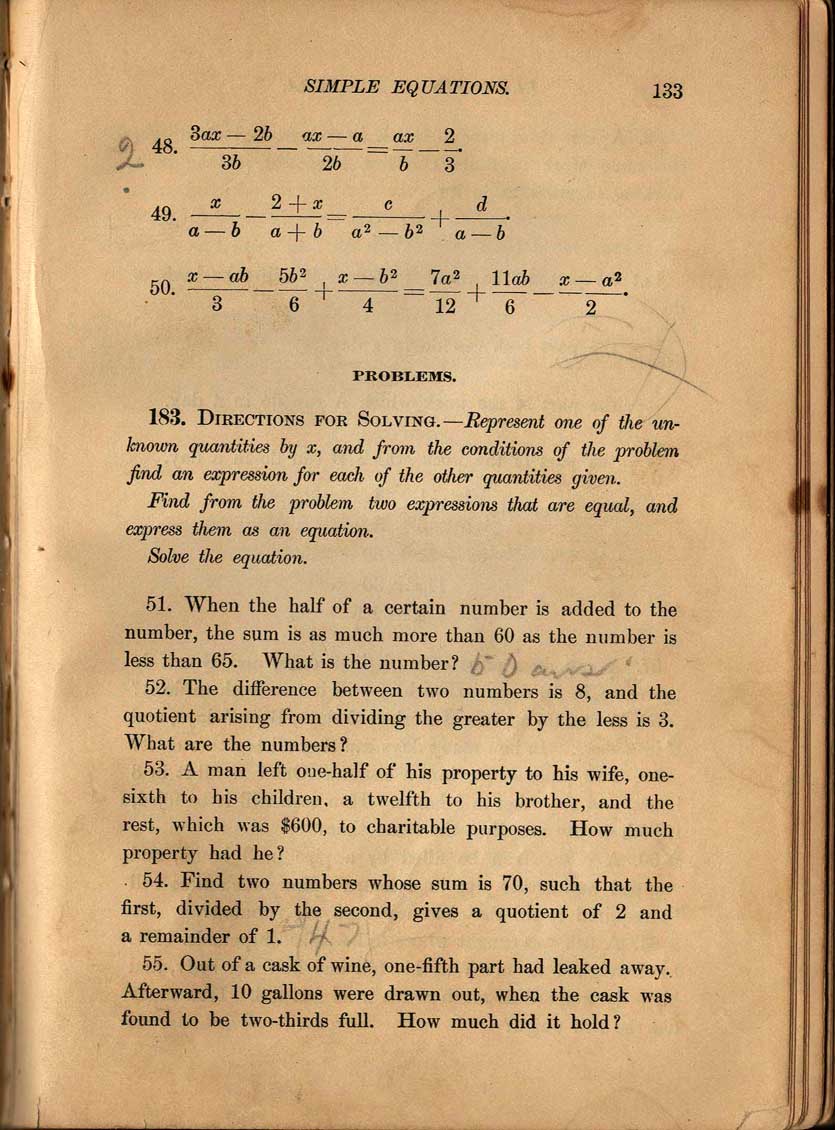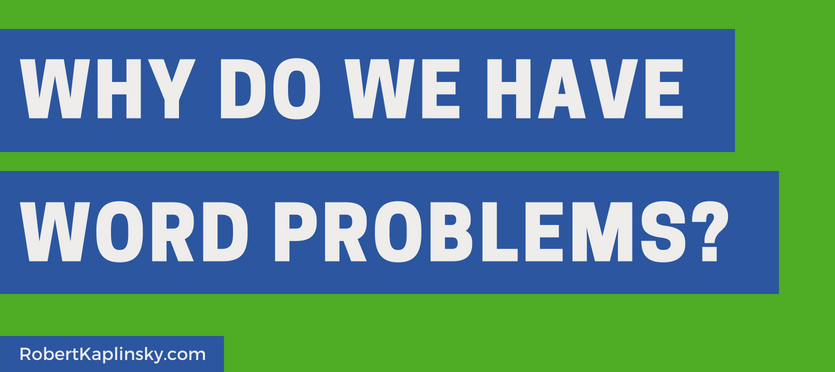Which of these are word problems:
A) How many pizzas do you need to buy?
B) You and your seven friends want to have pizza for dinner. Each person will eat three slices of pizza. Each pizza has eight slices. How many pizzas do you need to buy?#MTBoS #iteachmath
— Robert Kaplinsky (@robertkaplinsky) April 10, 2019
For the purposes of this blog post, I am defining word problems like choice B. I have no issues at all with choice A.
I don’t mean why do we need or use word problems but rather why do they even exist in the first place? This may seem unimportant or trivial, but I think that understanding the answer to that question will be useful in understanding their role in math education today.
Take a look at the image below. It is from the book Milne’s Inductive Algebra which is an Algebra textbook published in 1881 by Eclectic Press. When I first received this book as a gift about ten years ago, I was very curious as to what would be inside. How had Algebra in the United States changed over the last 125 years?

What I came to realize was that not much has changed. There were definitely many word problems, but I realized that when this book was published there probably weren’t great options for incorporating context into problem solving.
Let’s compare that to present day instruction. Today we have many alternatives for providing authentic and engaging contexts (such as my problem-based lessons). So, why do we still use so many word problems?
Is it because word problems exist in real life? Not that I can see.
Is it because using word problems are the best way to instruct students? Almost certainly no.
Or, is it because of status quo bias where we continue to use them because that’s the way we’ve always taught math? This is what I think is happening.
This is not a trivial point to me. While word problems can be useful, losing focus of what’s important (making sense of mathematics) leads to teaching students strategies like the ones below.

There are three very important takeaways here:
- Teaching strategies like CUBES is not teaching mathematics. It’s teaching how to decode a kind of problem writing style that has no application in real life. At best, it teaches students how to be a math robot like I was. I could give you the correct answer but I had no idea what I was actually doing. It’s very similar to the Chinese Room thought experiment and leads to creating students like the last student in this short and terrifying video.
- The main reason educators teach strategies like CUBES is because they may help students solve the kinds of problems they will likely see on standardized assessments. No one is teaching these because this is something that is used in real life.
- Finally, word problems are virtually non-existent in real life. There are certainly plenty of real life contexts, but very few of them are set up as neatly written word problems. In real life you have to create your own problem by figuring out what information is important and using it to solve the problem.
I think it’s important for us as educators to take a step back and think about what tools we use and why we use them. To be clear, I’m not saying that teachers should never use word problems, but it depends on both why they’re used and how they’re used.
For example, word problems are commonly used in Cognitively Guided Instruction (CGI). In those situations, it’s never about mindlessly using a technique to find the answer but rather about providing a context where conversations about sense making can come out. You’re never going to see a CGI-trained educator teaching CUBES.
So, what do you agree with and why? Or, where am I missing the point and need to think more deeply? Please let me know in the comments.

